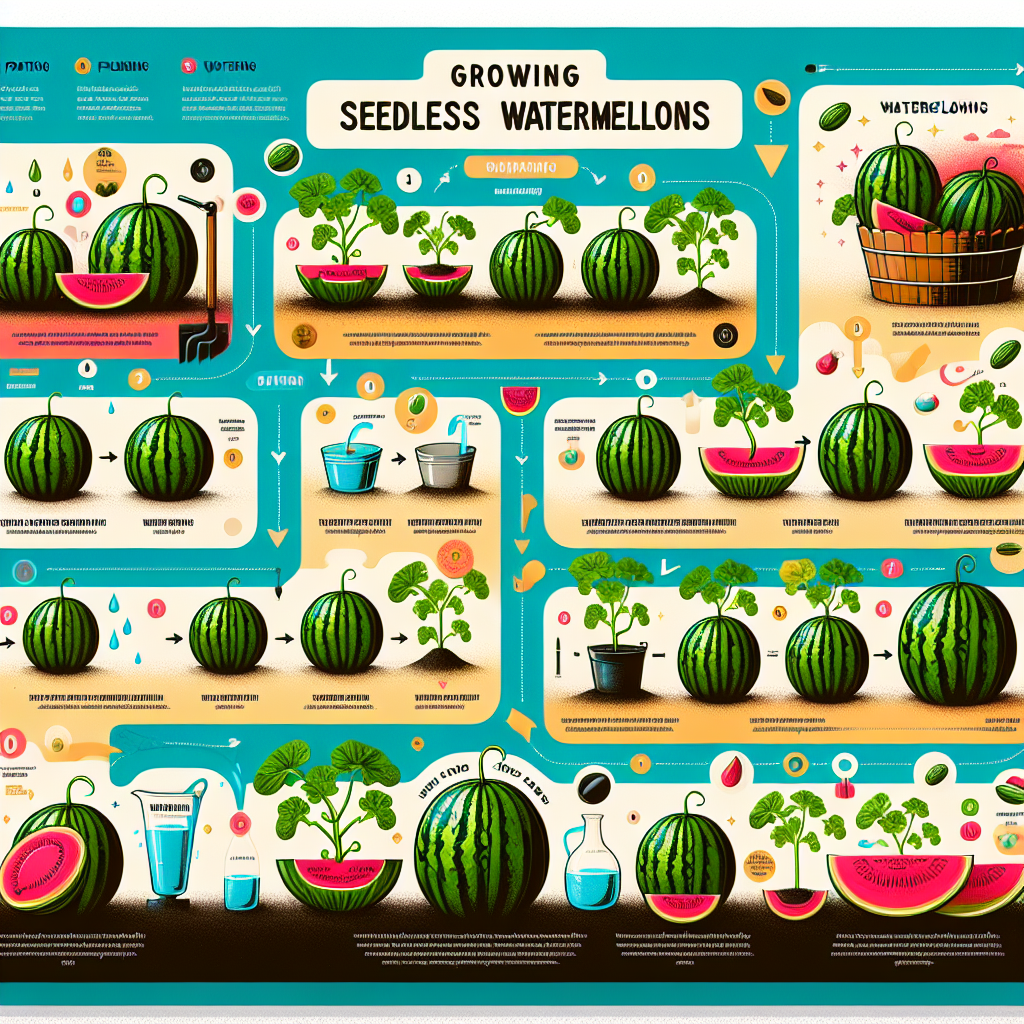
How to grow seedless watermelon
Introduction to Seedless Watermelon
Watermelons are a summer staple, loved for their sweet, refreshing taste and hydrating properties. Among the various types, **seedless watermelon** has gained immense popularity in recent years. Many watermelon lovers prefer it due to the convenience of not having to deal with seeds while enjoying this delicious fruit. But how can you successfully grow seedless watermelon in your garden? In this article, we’ll explore the techniques, tips, and essential considerations for cultivating your very own seedless watermelons.
Understanding Seedless Watermelons
Before diving into the growing process, it's crucial to understand what seedless watermelons are. Unlike traditional watermelons, which have hard seeds, seedless watermelons contain small, undeveloped seeds that are virtually unnoticeable. These watermelons are created through a process called **triploidy**, where the plants are bred with both diploid (normal) and tetraploid (double chromosome) varieties.
Benefits of Growing Seedless Watermelon
- Convenience: No seeds mean easier slicing and eating.
- Taste: Many find that seedless varieties are sweeter and more flavorful.
- Market demand: Given their popularity, seedless watermelons can fetch a higher price if sold commercially.
Choosing the Right Environment
The success of growing seedless watermelon largely depends on the environment. Here are a few factors to consider:
Climate and Soil Requirements
- Climate: Watermelons thrive best in warm climates, ideally between 70°F and 90°F.
- Soil: They prefer well-draining sandy loam or sandy soil with a pH range of 6.0 to 6.8. Soil that is too heavy can lead to root rot.
Sunlight Exposure
Watermelons are sun-loving plants. They require at least 6 to 8 hours of full sunlight daily to develop effectively. Whether you're planting in a garden or using raised beds, ensure that the selected area gets plenty of sun.
Starting Seeds Indoors
Growing seedless watermelon starts either by direct sowing in the garden or by starting seeds indoors. Starting seeds indoors allows for an extended growing season, especially in cooler climates. Here’s how to do it:
Gather the Necessary Materials
- Seedless watermelon seeds (preferably from a reputable source)
- Seed trays or peat pots
- Seed starting mix
- Water and a spray bottle
Procedure for Starting Seeds
- Fill the trays: Use seed starting mix to fill your trays or pots, leaving a little space at the top.
- Plant the seeds: Sow the seeds about 1 inch deep, and space them at least 2 inches apart.
- Water carefully: Moisten the mix using a spray bottle to avoid over-saturating the soil.
- Provide warmth: Place the trays in a warm area (approximately 80°F) until germination occurs.
- Monitor growth: Once seedlings appear (usually within 7-14 days), move them to a bright location or under grow lights.
Transplanting Seedlings Outdoors
Once your seedlings are about 4-6 inches tall and all chances of frost have passed, it’s time to transplant them outdoors. Here’s how to do it successfully:
Preparing the Garden Bed
- Clear any debris: Ensure the area is free from weeds, stones, and other obstacles.
- Fertilize: Incorporate compost or a balanced fertilizer into the soil a few days before planting.
- Space the plants: Place seedlings 2-3 feet apart, as watermelon vines require ample room to spread out.
Transplanting Process
- Dig holes: Create holes slightly larger than the root ball of each seedling.
- Remove seedlings: Gently take seedlings out of their trays or pots.
- Place and fill: Set the seedlings in the holes and cover the roots with soil, ensuring you don't bury the stems.
- Water deeply: After transplanting, water the plants thoroughly to encourage root settling.
Caring for Your Seedless Watermelons
Care is vital for a successful seedless watermelon crop. Here are essential practices to follow:
Watering Techniques
Watermelon plants need consistent moisture, especially during dry spells. However, overwatering can lead to rot, so balance is crucial. Aim for deep, infrequent watering to encourage strong root growth. A general guideline is:
- Water about once a week, depending on rainfall and soil moisture.
- Apply additional water during flowering and fruit-set stages.
Fertilization Practices
Proper fertilization promotes healthy growth. Utilize a nitrogen-rich fertilizer during the early growth stages, followed by a balanced fertilizer once flowers start forming. An example of a fertilization schedule includes:
- Pre-planting: Amend soil with compost.
- Early growth: Apply a nitrogen-rich fertilizer.
- Mid-season: Use a balanced fertilizer to support fruit development.
Pest and Disease Management
Watermelons are susceptible to several pests and diseases. Regular monitoring can prevent larger outbreaks. Here are some common issues and treatments:
- Striped Cucumber Beetles: Hand-pick or use insecticidal soap.
- Powdery Mildew: Apply organic fungicides as a preventative measure.
- Aphids: Introduce beneficial insects like ladybugs or use neem oil.
Harvesting Your Seedless Watermelons
Knowing when to harvest is crucial to enjoying the fruits of your labor. Seedless watermelons typically reach maturity about 80-90 days after planting. Here are signs that indicate it’s time to pick:
- Color Change: The skin of the watermelon will develop a more muted, dull appearance.
- Field Spot: Check for a creamy yellow spot on the underside where it has been resting on the ground.
- Vine Condition: The tendril closest to the fruit will turn brown and dry.
How to Harvest
- Use a sharp knife or garden shears.
- Cut the stem about 1-2 inches above the watermelon.
- Place the watermelon gently in a cool, shaded area to prevent bruising.
Conclusion
Growing seedless watermelon can be a rewarding endeavor, providing you with an abundance of sweet, juicy fruit throughout the warmer months. By understanding the unique requirements of these plants and following the outlined steps, anyone can successfully cultivate their own seedless watermelon at home. Not only will you enjoy the pleasure of gardening, but you'll also savor the delightful taste of fresh, seedless watermelon right from your backyard.
By Guest, Published on October 15th, 2024